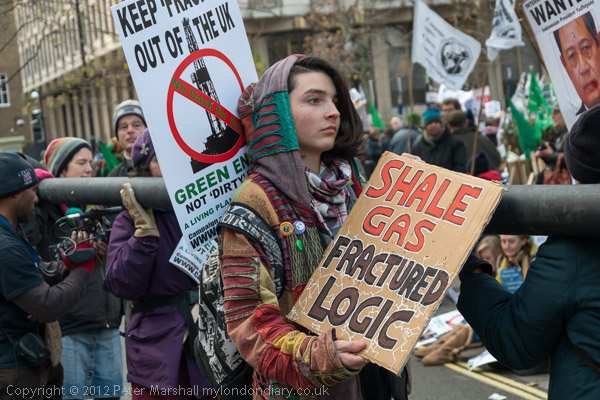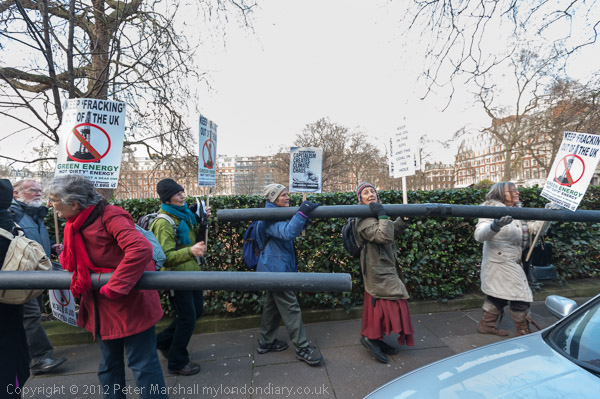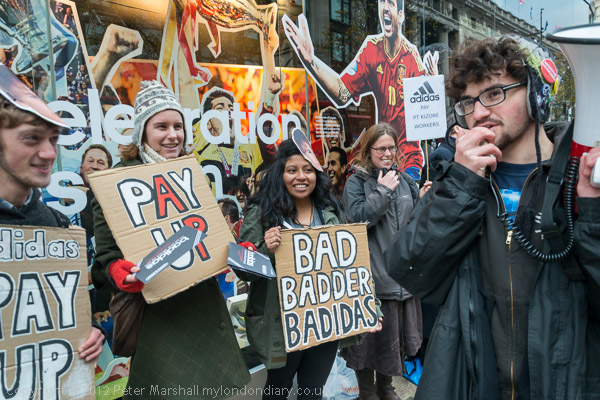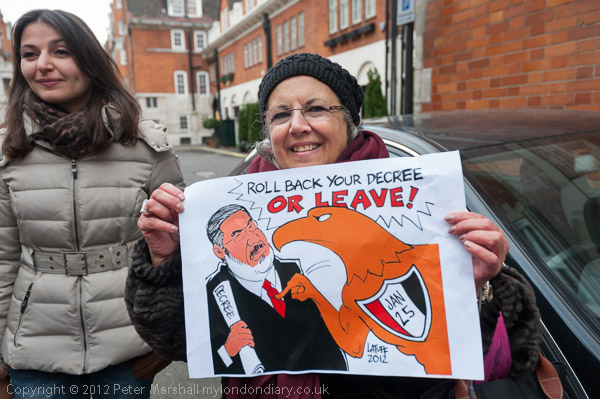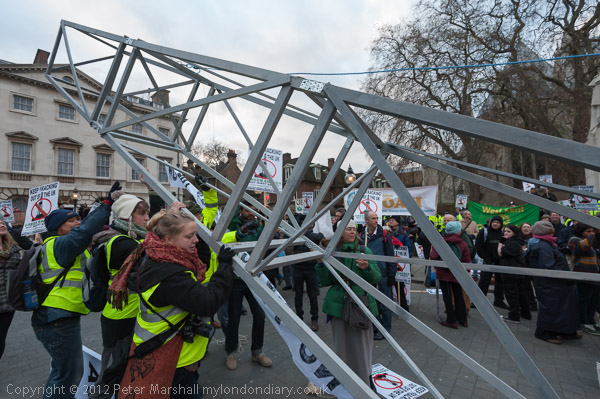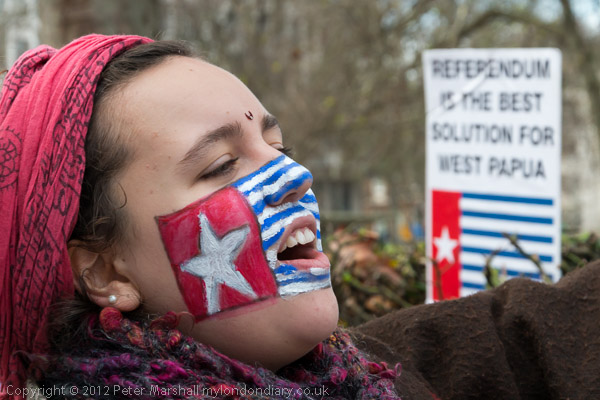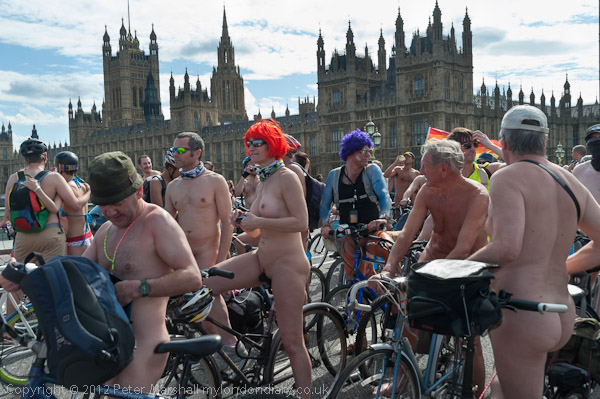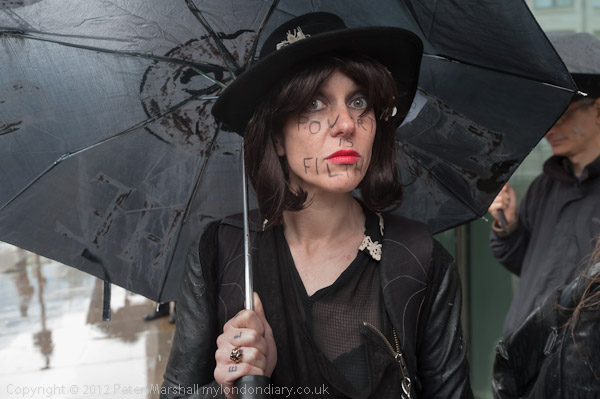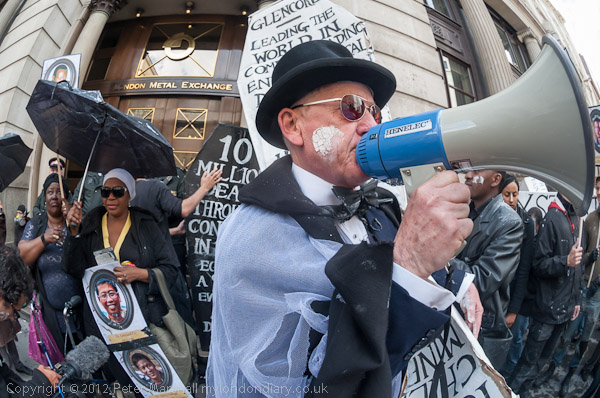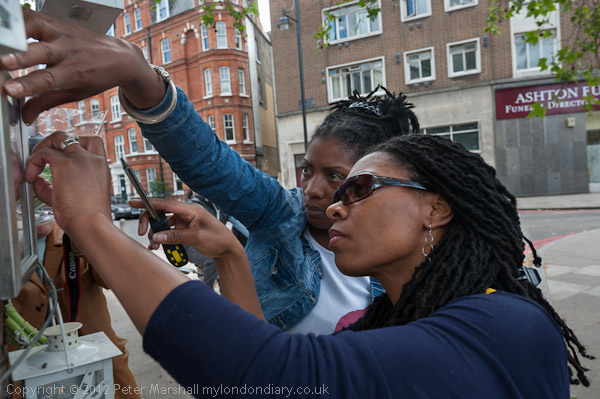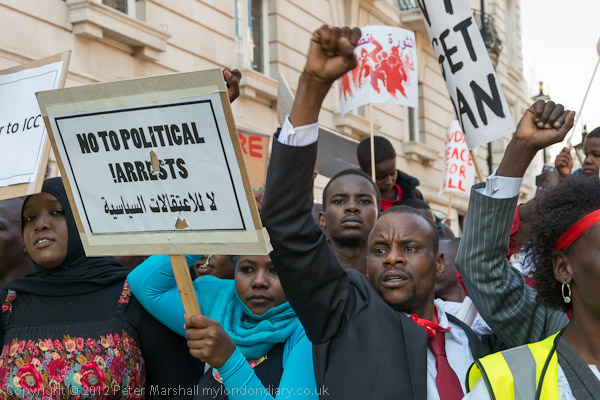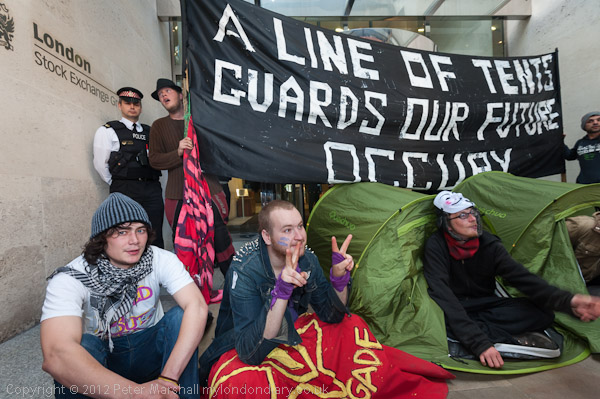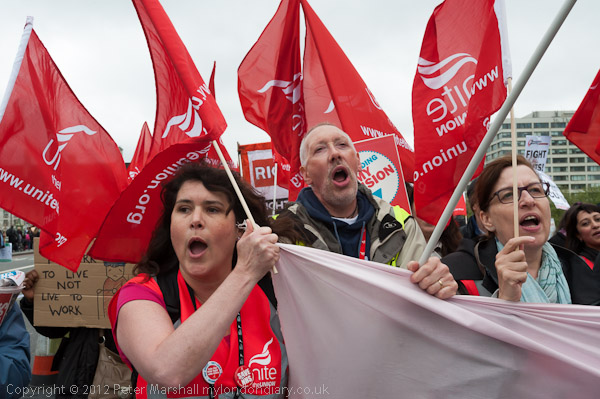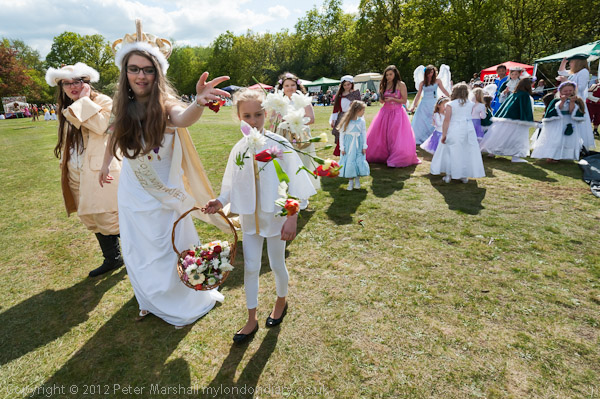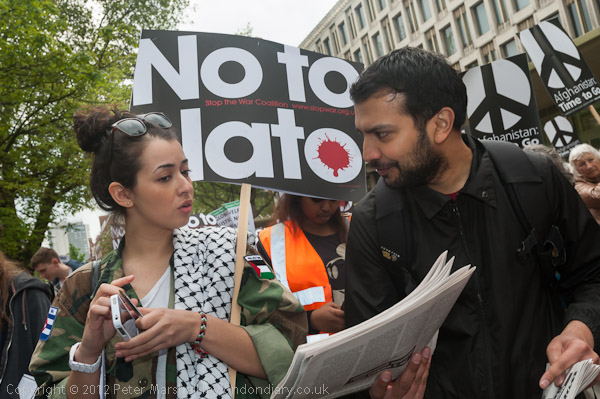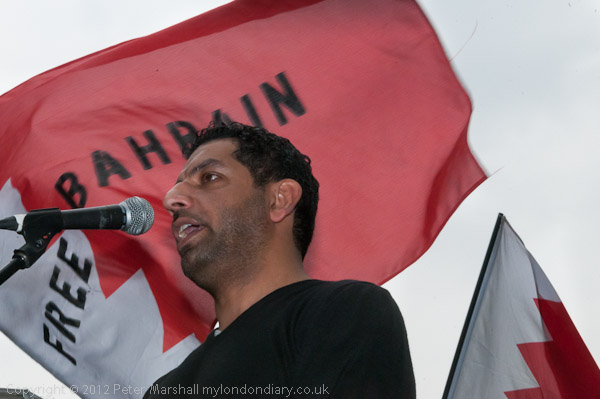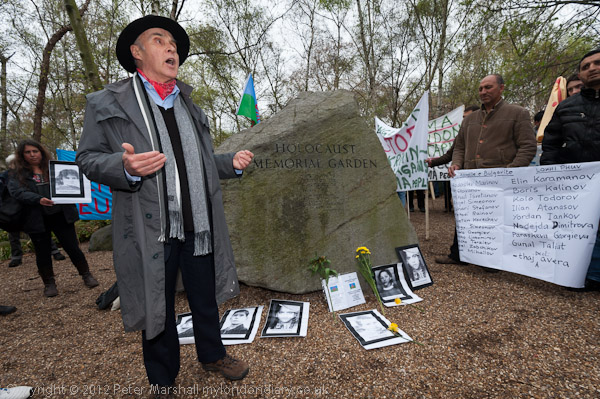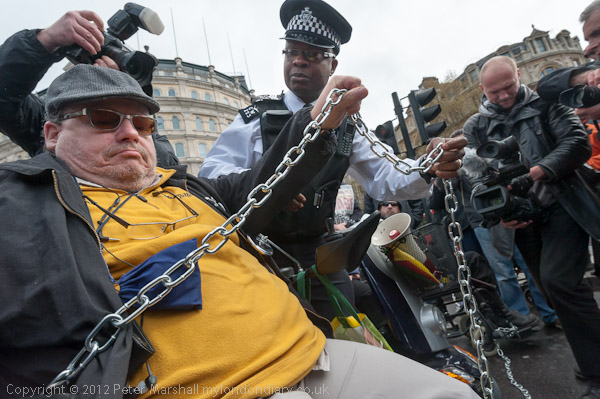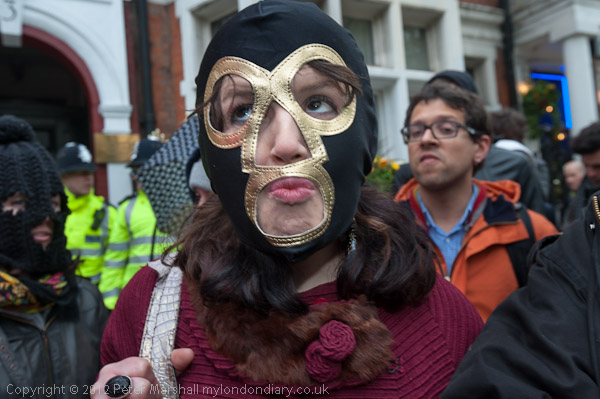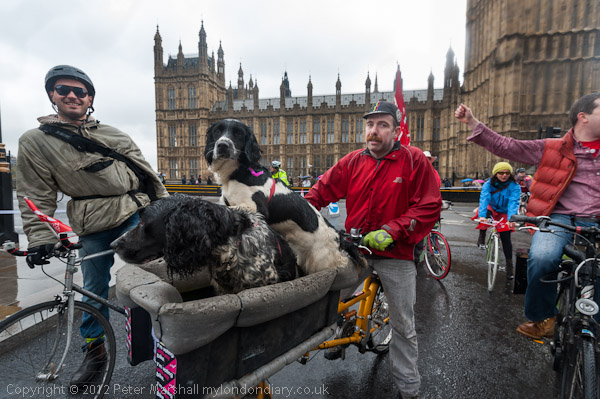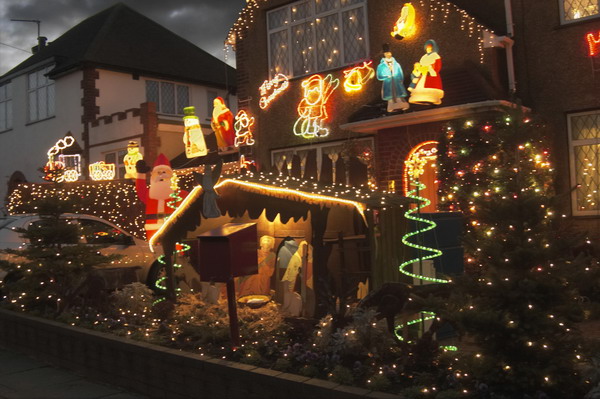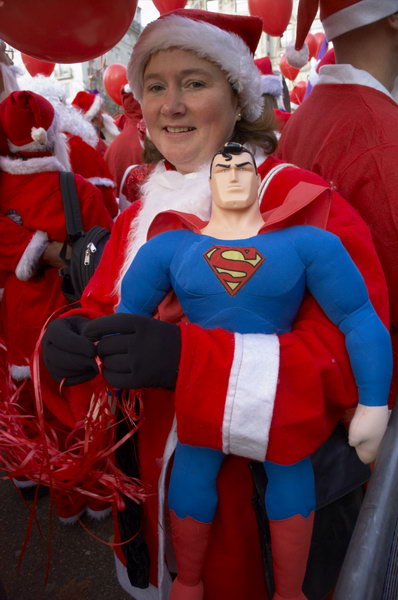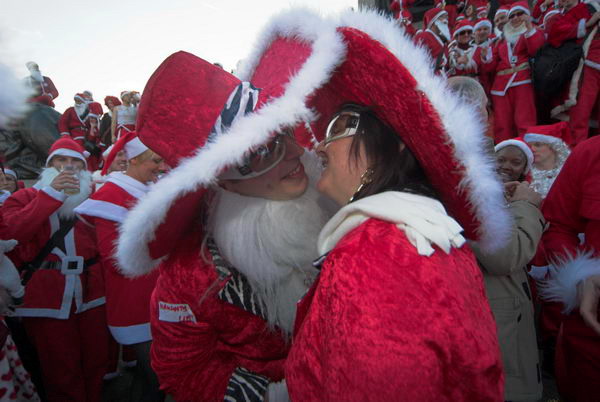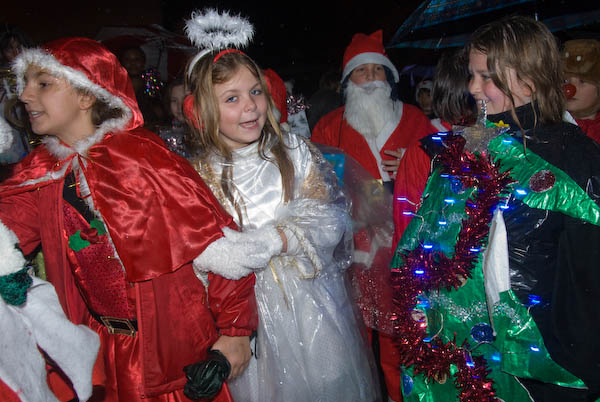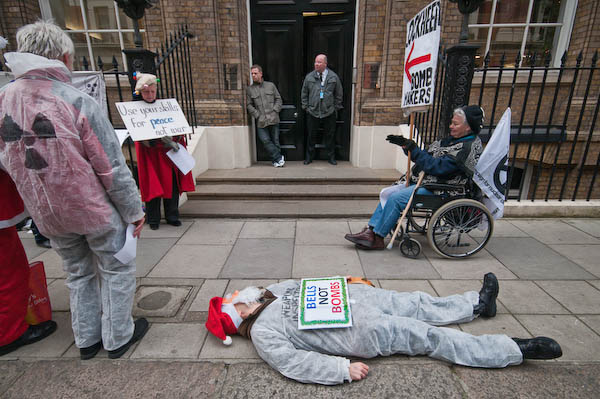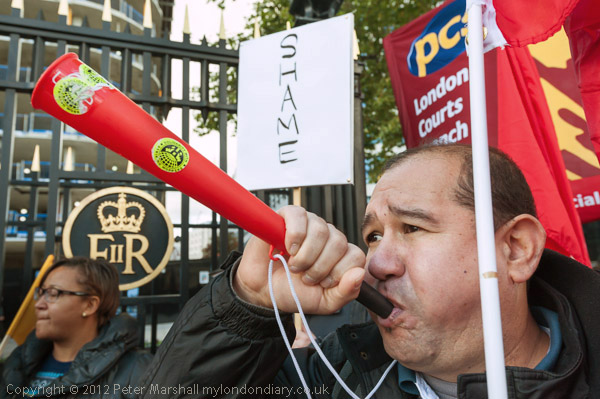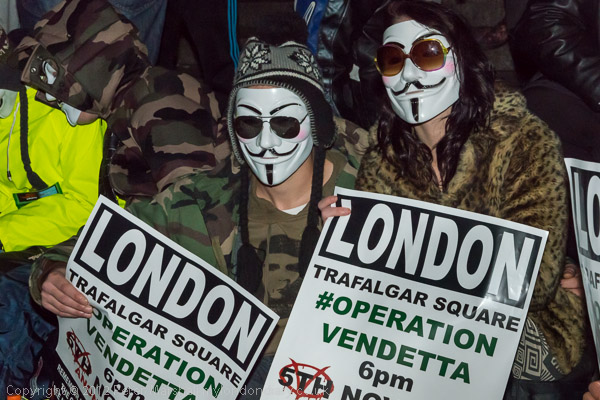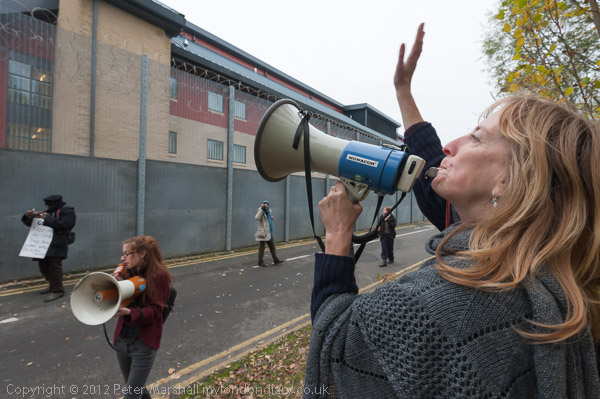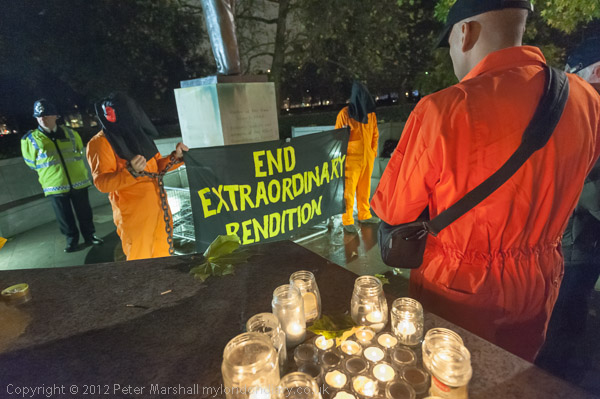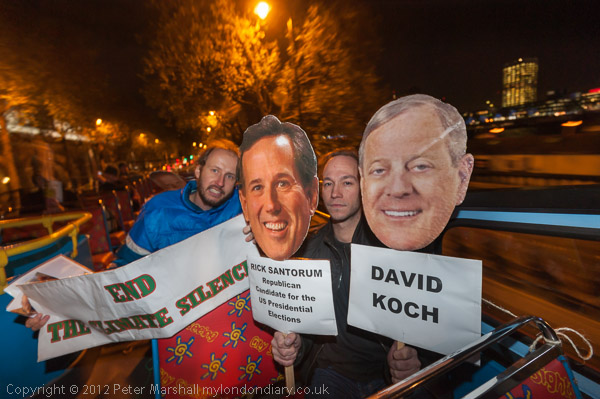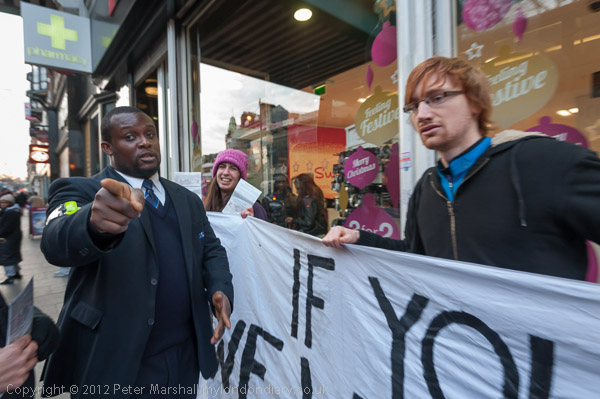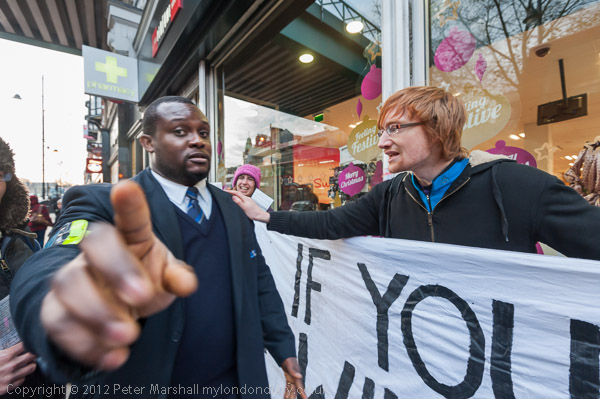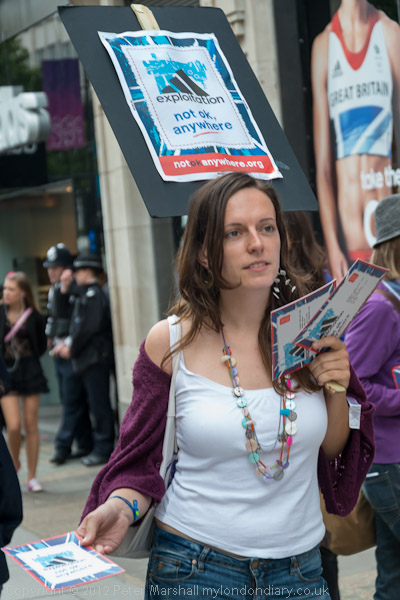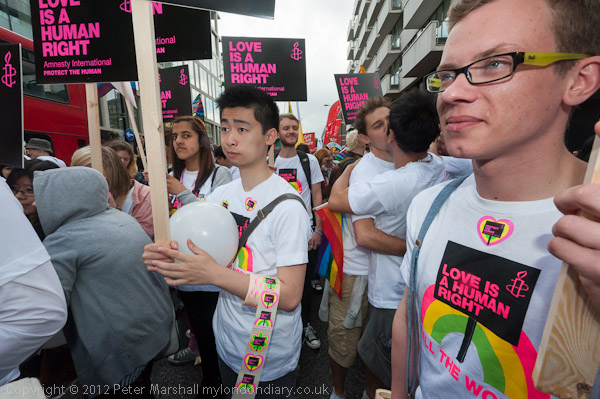
Amnesty International group at WorldPride 2012
Pride ain’t what it used to be, for sure. But this year, with a ban on vehicles forcing everyone onto the streets perhaps took it back a little towards the kind of event it used to be and less of the slickly commercial festival parade it has been becoming. This was also an important anniversary, WorldPride London marked 25 years since the first Pride in London, with some of those who came out on the street then marching proudly at the front of the event. Their protest – and it was then both a personal and a political protest – was one of the forces that have led to a profound change in attitudes in the past 25 years, making it almost impossible to understand how things were back then.
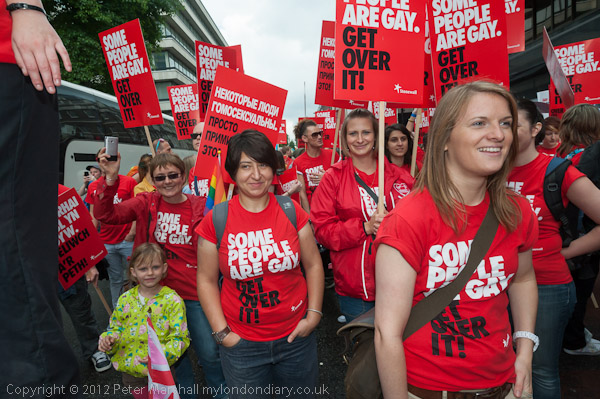
Stonewall group at WorldPride 2012
Of course I photograph many of the more eccentric and flamboyant dressers that give the event much of its character, but the pictures that tend to be of more interest to me are on the more political end. The first two pictures both centre around an individual in a crowd, in both cases seeming a little distanced from all that is happening around them. Both also emphasize a single message repeated across the frame, ‘Love is a Human Right’ and ‘Some people are gay – get over it’. And it is really the other things that are happening in the frame that make them appeal to me, the different expressions of the people, the couple kissing, the giant and the child and so on.
These were both taken as the march formed up on Baker St, where the people are much closer together than during the actual march, and either standing around or moving slowly. In both I’ve used flash, and with the wide angle – at 16mm in the top image and zoomed out a little to 22mm in the lower one, I’m very close to the people I’m photographing. Many of the people in them are aware that I am photographing them because I’ve already taken several frames, and of course there are many other people around also taking pictures.
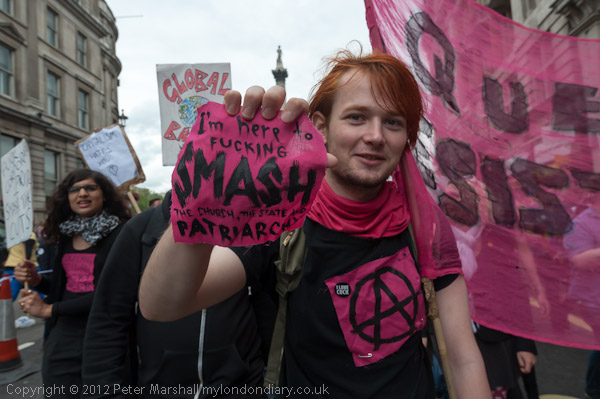
Queer Resistance at WorldPride 2012
Later in the day I came back to the march as it neared its end and took a few more pictures on Whitehall, including several of the small group of gay anarchists. I was attracted by the directness of the message held up by this young man, carrying one end of the ‘Queer Resistance’ banner and out to ‘smash the church, the state and patriarchy’ and took several pictures walking backwards a short distance in front of him as he pushed the message out towards me.
Nelson on his column in Trafalgar Square rising above his hand seemed somehow appropriate, certainly representing London and perhaps also the state and the system he was intent on smashing. It also strikes me as a rather phallic monument, and perhaps appropriate for that reason also.
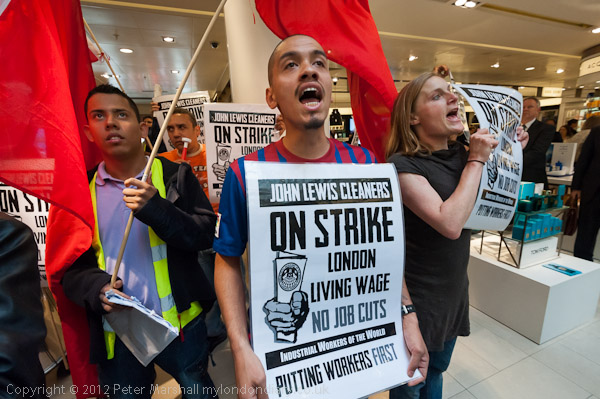
Cleaners protest inside John Lewis on Oxford St
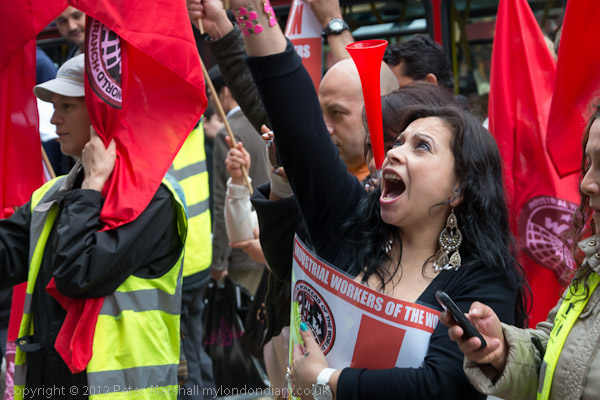
Cleaners protest outside John Lewis on Oxford St
I’ve spent quite a lot of time this year photographing the efforts of the cleaners to get decent conditions, to be treated fairly and with respect by their management and to get a living wage. The series of protests at John Lewis – I photographed three in July, Cleaners Strike at John Lewis, John Lewis cleaners step up protest and Cleaners Continue Fight at John Lewis – highlighted their case, with John Lewis, in some respects at least a model company with its ‘partnership’ structure getting its dirty work done on the cheap by outsourcing it to a company that paid them as little as it could and treated them like dirt.
The protests by cleaners, backed by their union, the Industrial Workers of the World (IWW – later in the year they formed their own group, the IWGB) are loud, colourful and very public and have proved effective, embarrassing managements and forcing them to negotiate. Larger and better-known unions could learn a lot from them and the way that the IWW/IWGB have made the workers more central to disputes and united them in the actions at the workplace.
I think that these pictures show something of the spirit of the cleaners, their solidarity and their determination – which has been rewarded by some notable successes, although there are still far too many workplaces in London where cleaners are underpaid, overworked and subjected to management abuse, and the struggle continues
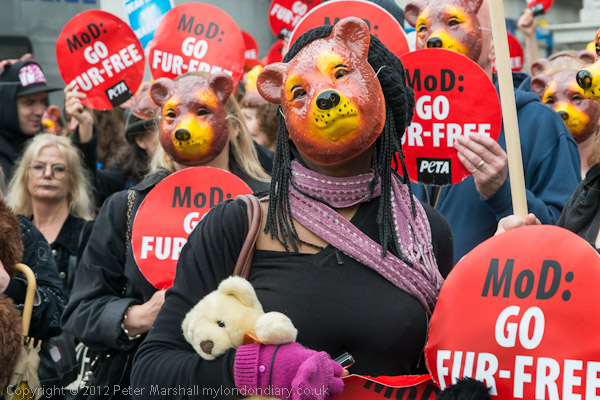
Photocall at Marble Arch for ‘Spare the Bears’
PETA ‘Spare the Bears’ March against the use of animal fur in ornamental military headgear was one I almost missed. I’d gone to its start point only to find a handful of people standing around in rather heavy rain and nothing happening at the time I’d been told it would start. I went off to photograph something else, but when I’d done that tried to find them on their way. I’d pretty well given up completely by the time the actually arrived for the final photocall at Marble Arch, where this picture was taken. I took several pictures with this woman holding her bear at the front of the group, mainly in portrait format, which are perhaps better, but this is the one I come back to, with just the head of the pale cream bear peeping over the black arm and purple glove.
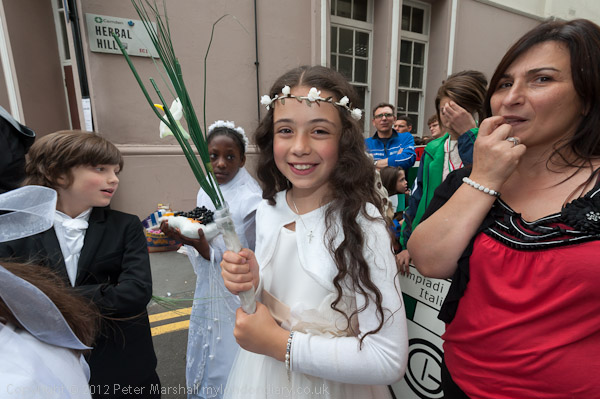
First communicants waiting to take part in the procession
Another event that I’ve photographed many times over the years is the annual procession of Our Lady of Mount Carmel from the Italian church in Clerkenwell. As so often its a picture about the different gestures and expressions of the people in the picture, but also one that makes clear what and where it is. Another picture close to the main figures with the 16mm and tightly framed.
